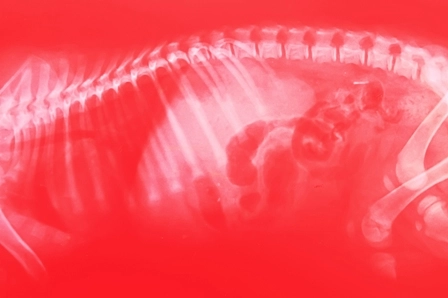Modifier Coding Alert
Include 59 When Providers Test For 2 Flu Strains
Here’s why reporting 87804 x 2 is a bad idea.
Despite the medical community’s best efforts to vaccinate against the influenza virus, some patients will still get it. When your practice administers a flu test, you’ll have to make some crucial decisions.
For Medicare, and some private payers, you’re going to need to include a modifier whether the provider tests for single or multiple flu strains. For encounters where she tests for more than one flu strain, you’ll need an additional modifier to separate the tests and maximize reimbursement.
Don’t let flu test coding make you sick. Take this expert advice to heart, and your coding knowledge for this common office flu test will be nothing to sneeze at.
ID 87804 Test Before Choosing Code
If you’re performing a test that detects the flu via immunoassay in the office, you’ll report the service with 87804 (Infectious agent antigen detection by immunoassay with direct optical observation; influenza), says Maggie M. Mac, CPC, CEMC, CHC, CMM, ICCE, president of Maggie Mac-Medical Practice Consulting in Clearwater, Fla.
Though it’s a common screening in most medical practices, you must positively identify the 87804 flu test before coding or you could face denials.
The flu test that the 87804 code represents “is a testing platform that yields a typically qualitative result by producing a signal on the reaction chamber,” explains Melanie Witt, CPC, COBGC, MA, an independent coding consultant in Guadalupita, N.M. The provider can then interpret the results visually, via a colored band or some other machination (the “direct optical observation” that the 87804 code descriptor mentions).
If the test fits all the parameters put forth in its code descriptor, you should report 87804 for your provider’s flu test.
Keep QW Handy For Medicare Patients
When coding 87804 for Medicare, remember that it is a CLIA- (Clinical Laboratory Improvement Amendments) waived test, Mac reminds. If your practice does not have a CLIA certification, you cannot perform this flu test or code for it.
If your practice does have CLIA certification, remember to append modifier QW (CLIA-waived test) to 87804 to indicate your CLIA status. The QW modifier is only required for Medicare payers, but some private payers might also want you to use QW. Check with your top payers about their QW policies, in case they have specific requirements.
Best bet: If you are unsure whether an insurer requires modifier QW for 87804, call and check before filing your claim. “Each payer may have its own requirements as to whether the QW is required, but it would be appropriate to append if the test is indeed CLIA-waived,” says Sarah L. Goodman, MBA, CPC-H, CCP, FCS, president/CEO and principal consultant at SLG, Inc., in Raleigh, N.C.
For a list of CLIA-waived tests, see www.cms.gov/Regulations-and-Guidance/Legislation/CLIA/downloads/waivetbl.pdf.
Opt For 59 Over 87804 x 2
Once you’ve determined that your provider performed an 87804 flu test, you’re ready to check if he tested for both strains A and B of the flu.
While it is possible for the provider to test for only one strain of the flu, physicians will often test for strains A and B during the same encounter. When your provider performs this test in the office to identify both flu strains A and B, you’ll be able to report 87804 twice. In order for the claim to sail through, however, you’ll need help from a modifier — or modifiers, depending on the payer.
“If the assays provide two separate results — a result for influenza virus A and a result for influenza virus B — it would be appropriate to report two units of code 87804,” confirms Witt.
Mac advises coders to list 87804 on two lines with modifier 59 (Distinct procedural service) appended to the second unit of 87804. This is preferable to reporting the code twice on the same line, in her experience.
Mac reports seeing claims with 87804 x 2 on one line, and the second flu test code was “completely ignored” by the payer. When you test for flu types A and B, “you get better responses with 87804-59 on the second line,” she says.
Caveat: Keep in mind that CMS introduced the X modifiers (XU, XS, XP, XE) and your payer may want to see one of those instead. For more information on the X modifiers, see, “Modifier Guidance: Look at Published X{ESPU} Examples Some Payers Are Offering, Part 1” in Modifier Coding Alert Vol. 2, No. 3, and “Modifier Guidance: Look at Published X{ESPU} Examples Some Payers Are Offering, Part 2” in Modifier Coding Alert Vol. 2, No. 4.
Document Both Flu Tests, Reduce Denial Possibility
You should also bulwark your multiple flu test claims with the proper documentation, Mac advises. Before you send in your 87804 claims, be sure to check the documentation to see if the provider was specific enough to prove to payers that he tested for strains A and B. If you don’t have documentation clearly delineating the tests’ objectives, the payer, understandably so, will balk at reimbursing you twice for 87804.
“Be sure you document the findings for both [flu] tests,” Mac says. “Instead of saying, ‘Flu strains negative,’ say it twice: Say ‘Flu strain A is negative. Flu strain B is negative,’ because that information could get lost by the payer if it’s not spelled out.”
Related Articles
Modifier Coding Alert
- Flu Testing:
Include 59 When Providers Test For 2 Flu Strains
Here’s why reporting 87804 x 2 is a bad idea. Despite the medical community’s best [...] - ICD-10:
CMS FAQ Clarifies 'Grace Period,' Implementation Date
Use ICD-10 codes beginning Oct. 1, or your claims will be sent right back to [...] - Specialty Focus:
E/M Modifiers: Rely On Modifier 24 to Succeed In Coding Unrelated Postop E/Ms
If you forget the modifier, insurers will probably consider the E/M part of surgical aftercare. [...] - Reader Question:
Utilize 26 to Add Fluoroscopy Code to Claim
Question: Our gastroenterologist met a patient at our local hospital to perform a flexible esophagogastroduodenoscopy. Due [...] - Reader Question:
Physician Must Start Surgery On 53 Claims
Question: Our surgeon recently performed all of the preoperative preparation and positioning for a patient about [...] - Reader Question:
Remember TC to Make Your FAST Exam Claims Go
Question: A 40-year-old man was brought to the emergency department (ED) by ambulance after a [...] - Reader Question:
Remember 57 On E/Ms After Physician Makes Surgery Decision
Question: A patient had an office visit (99213) with a 185 diagnosis on Aug. 17. The [...] - You Be the Expert:
Scrubbing Your Debridement Claims Clean
Question: An established patient reported to the physician with open sores on his lower back, upper [...]




